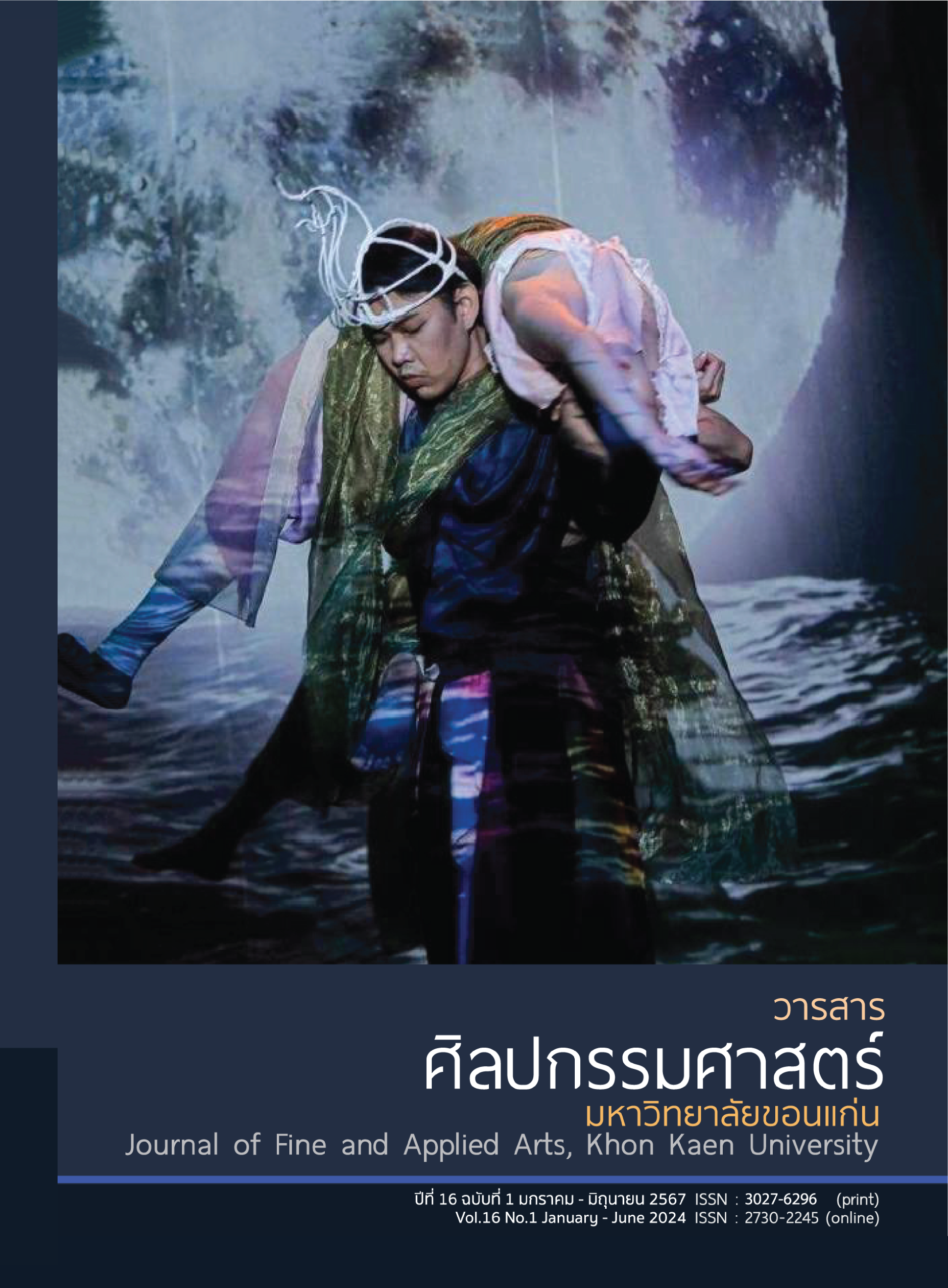Typeface Design to Reflecting Corporate Identity of Poh Chang Academy of Arts, Rajamangala University of Technology Rattanakosin
Main Article Content
Abstract
The objective of this research are to study the corporate identity, design typography of the Poh-Chang College, and assess the typography design satisfaction. The subjects consisted of 200 participants; 50 Poh-Chang internal staff members using cluster sampling; and 150 alumni and current students using accidental sampling. Moreover, there are 5 experts in Typography Design and Corporate Identity Design involved. The tools were survey questionnaires, interviews, and satisfaction assessments. Data were analyzed using frequency, percentage, and standard deviation. The research findings reveal that: 1) Poh-Chang is an educational institution in the field of arts affiliated with the Royal Institute. It emphasizes the preservation of craftsmanship, art, and design, blending Thai and international elements. The environment is contemporary, and the appearance is pleasant, conservation-oriented, and modern. 2) The typography is a Display Typefaces. The Looped modified from Thai Art were more rounded and open with the stems inspired by the administrative building architecture. The overall shape adheres to a slightly formal and trustworthy appearance with various stroke thickness, giving a gentle, approachable, and noble feel, with a sense of contemporary craftsmanship with simplicity. 3) The average satisfaction scores across each group revealed that the Poh-Chang staff group had a "high" level of satisfaction ( = 4.34), while the alumni-current students group of the Poh-Chang had a "high" level of satisfaction (
= 4.45). Both groups, therefore, had an overall satisfaction level rated as "high" (
= 4.40).
Article Details

This work is licensed under a Creative Commons Attribution-NonCommercial-NoDerivatives 4.0 International License.
Content and information in articles published in the Journal of Fine and Applied Arts of Khon Kaen University is regarded as the opinion and sole responsibility of the author(s) directly; therefore, editors are not obliged to agree to or share any responsibility with regard to the content and information that appears within these articles.
All articles, information, content, image, etc. that have been published in the Journal of Fine and Applied Arts of Khon Kaen University is the copyright of the Journal of Fine and Appllied Arts of Khon Kaen University. Any person or organization who wishes to distribute all or parts of the articles for further dissemination or other usage must first receive permission from the Journal of Fine and Applied Arts of Khon Kaen University before proceeding to do so.
References
เกรียงไกร เจริญผล. (2554). กระบวนการสร้างอัตลักษณ์ของมหาวิทยาลัยเอกชนไทย: กรณีศึกษามหาวิทยาลัย นอร์ท-เชียงใหม่. บียู อะคาเดมิค รีวิว, 10(2), 18-24.
ฉลาดชาย รมิตานนท์. (2550). อัตลักษณ์วัฒนธรรม และการเปลี่ยนแปลง. เชียงใหม่: ภาควิชาสังคมวิทยาและมานุษยวิทยา คณะสังคมศาสตร์ มหาวิทยาลัยเชียงใหม่.
ธีรวัฒน์ พจน์วิบูลศิริ. (2543). การใช้ตัวอักษรไทยเพื่อสื่อสารบุคลิกลักษณะในงานออกแบบเรขศิลป์. วิทยานิพนธ์ปริญญาศิลปกรรมศาสตรมหาบัณฑิต สาขานฤมิตศิลป์ บัณฑิตวิทยาลัย จุฬาลงกรณ์มหาวิทยาลัย.
นุกูล ชมภูนิช. (2554). ตึกไทยประยุกต์แห่งแรกของไทย. ใน สมาคมศิษย์เก่าเพาะช่าง. ใน รำลึก 100 ปี ศาสตราจารย์ (พิเศษ) ประกิต (จิตร) บัวบุศย์ ราชบัณฑิต ศิลปินแห่งชาติ. (หน้า 218-219). กรุงเทพฯ : กรังด์ปรีซ์อินเตอร์เนชั่นแนล.
บรรลุ วิริยาภรณ์ประภาส. (9 เมษายน 2564). สัมภาษณ์. ผู้อำนวยการ. วิทยาลัยเพาะช่าง.
ยุทธภูมิ สุวรรณเวช. (2551). ภาพลักษณ์ของมหาวิทยาลัยเทคโนโลยีราชมงคลพระนครในทัศนะของสถานประกอบการ. กรุงเทพฯ : มหาวิทยาลัยเทคโนโลยีราชมงคลพระนคร.
สมาคมศิษย์เก่าเพาะช่าง. (2556). เพาะช่าง 100 ปี. กรุงเทพฯ : กรังด์ปรีซ์อินเตอร์เนชั่นแนล.
สุมิตรา ศรีวิบูลย์. (2547). การออกแบบอัตลักษณ์. พิมพ์ครั้งที่ 2. กรุงเทพฯ : คอร์ฟังก์ชั่น.
เสรี วงษ์มณฑา. (2542). การวิเคราะห์พฤติกรรมผู้บริโภค. กรุงเทพฯ : ธีระฟิล์มและไซเท็กซ์.
Ambrose, G. (2006). The fundamentals of typography. Singapore : AVA Book Production.
Askegaard, S., & Chirstensen, L. T. (2001). Corporate identity and corporate image Revisited:
A semiotic perspective. European Journal of Marketing, 35(3/4), 292-315.
Keller, K. L. (2003). Strategic Brand management: building, measuring and managing brand equity. 2nd ed. New Jersey : Prentice-Hall.
Miltenburg, A. (2017). Brand the Change. Amsterdam : BIS Publishers.
Samara, T. (2018). Letterforms. London : Rockport Publishers.
Söderhavet. (2013). Sweden. Retrieved July 8, 2023, from https://soderhavet.com/work/ sweden


